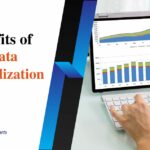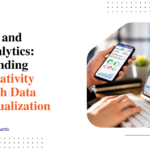Using Data Narrative and Storytelling to Engage Your Audience
Storytelling is a powerful tool for making connections and relaying information. When woven into an engaging, purposeful narrative, data can capture attention and drive meaning like nothing else. Data narrative brings data to life, turning dry statistics into memorable insights.
In the era of information overload, using data to tell a story is an impactful way to break through the noise and make your message stick. Whether you’re a marketer demonstrating business value or a nonprofit rallying support for a cause, share your data through relatable stories that spark emotion and action.
The significance of data narrative
Data narrative transforms sterile statistics into meaningful stories that connect and compel. More than just showcasing trends, data narratives reveal the human impact behind numbers through contextualized storytelling. They spotlight what matters and why it matters. An effectively crafted data story elicits emotion, fosters understanding, and catalyzes change.
Good data narratives don’t just report findings – they bridge data with life, inciting imagination for what could be next when armed with the right insights. Moreover, a report highlights that up to 73% of data within an enterprise goes unused for analytics.
Unlocking the potential of Storytelling through data narrative
- Facilitate Decision-Making: Data analysis storytelling elucidates the implications of data, guiding more informed and strategic decisions.
- Amplify Impact: Emotional and cognitive engagement driven by storytelling can significantly influence audience perceptions and actions.
- Boost Engagement: Transforming dry statistics into compelling narratives increases audience retention and understanding. The trend toward automated data storytelling is on the rise, with predictions indicating that by 2025, 75% of data stories will be generated through augmented analytics techniques.
Storytelling through data requires both art and science – the ability to uncover compelling patterns and craft a coherent plot. To get started:
a. Set the scene
Introduce key data points upfront to ground your audience in your story’s landscape, context, and significance. A few choice metrics, expert quotes, or research findings in your opening can help capture attention right away.
b. Spotlight the key characters
Identify the main characters early on so the audience knows who to root for. Bring the data to life with personas and segments so readers feel invested.
c. Chart the narrative arc
Flesh out the entire arc of your data story to build engagement. Share the inciting incident and rising action that contextualizes your insights. Guide your readers into and out of the climax, where your core findings are revealed for maximum impact.
d. Strategically highlight supporting data
Sprinkle in data throughout as second-tier characters that move the plot forward rather than overwhelm it. Revisit your core metrics at critical moments. Data analysis storytelling keeps key numbers at the forefront without losing the thread.
e. Have a clear takeaway
Close your data narrative by recapping the key discoveries and spelling out clear implications for the audience. This concluding takeaway crystallizes lessons learned and opportunities ahead.
5 specific ways to put compelling data narrative to work

1. Demonstrate progress over time
Numbers often need more meaning with comparison and context. Share data benchmarked against previous performance, targets, or industry standards to showcase progress. For example, “Customer renewals increased 10% over the last six quarters, exceeding the 8% benchmark for SaaS companies with under $20M in revenue”. This dynamic reporting helps tell an upward trajectory story.
2. Highlight milestone moments
Call attention to data at critical inflection points that brought success within reach. For instance, “When website traffic surpassed 100k monthly visitors last July, we secured enough leads to expand our sales team and meet aggressive growth goals for the first time.” These before and after snapshots make data memorable.
3. Reveal surprising insights
Unexpected findings pique interest by revealing something new. Leading with a counterintuitive data point creates curiosity to find out more. For example, “Contrary to initial hypotheses, while baby boomers make up 60% of customers, Gen Z represents the fastest growing segment with purchases up 215% year-over-year.” Such reveals hooked readers.
4. Put a human face on data
Personalize data through customer stories and testimonials that relay lived experiences. Quotes and anecdotes breathe life into figures like “Jenn saved 37 hours a month after switching to our AI-powered tool” or “Noah’s small business grew 300% in its first year on our ecommerce platform.” This human touch forges emotional connections.
5. Visualize complex data clearly
Well-designed graphs, charts, and infographics can unlock insights from intricate data sets through simplified visual communication. For instance, colorful heat maps can capture attention while illuminating trends. Strategic visuals support the storytelling through data for easy absorption.
While data provides the substance, storytelling supplies the glue to make numbers stick. Blend quantitative evidence with qualitative appeal to maximize memorability and drive meaningful engagement.
The bottom line
Data narrative and storytelling through data are not just about presenting data; they’re about making data come alive. By using data to tell a story, we can turn abstract numbers into meaningful insights that inspire action, change minds, and drive results. Whether you’re a marketer, educator, or data analyst, mastering the art of data analysis storytelling can significantly enhance the impact of your communication, ensuring your message is seen, felt, and remembered.
Embrace these principles, and watch as the stories you tell with data transform your audience’s engagement and understanding, proving that the power of data is not just in the numbers but in the stories they tell.







